Demolition by Deception?
Examining UTEP’s Campus Master Plan deferred maintenance cost claims
The recently released 2024 Campus Master Plan has The University Historian doing a lot of head-scratching these days. So much so that Mrs. University Historian is worried about a bald spot forming.
The University of Texas at El Paso (UTEP) has drawn attention to its plans to demolish several historic campus buildings, citing $348 million in deferred maintenance costs as the main justification.
This rationale is curious. The argument seems plausible on the surface. The university is addressing structural concerns, which is costly, and preserving aged structures is often an expensive enterprise.
Yet a deeper examination raises questions about the logic and financial prioritization behind UTEP’s decision.
The nine historic buildings in question, including the 1949 Student Union Building, represent a minor share of UTEP’s total deferred maintenance costs. In fact, they contribute only a small fraction to the university’s overall financial burden related to upkeep and infrastructure.
This raises an uncomfortable issue: if deferred maintenance is the driving force, why target these particular landmarks, which are culturally significant and architecturally distinct?
Preserving heritage is no easy feat. Balancing the demands of expansion and modernization against historical value often sparks debate on campuses nationwide. Yet universities must weigh not just financial calculations but also broader institutional values.
Demolishing historic structures to achieve what appears to be modest cost-saving gains risks signaling UTEP's shortsightedness, which overlooks long-term benefits such as community pride and historical continuity.
In this light, UTEP’s dilemma reflects a broader struggle seen across American campuses. But the question lingers: Is a narrative centered on deferred maintenance merely a convenient cover for other, less discussed motives? And if so, are the true costs—cultural and historical—being fully acknowledged?
Follow the money
The University Historian needs to learn a lot more about UTEP’s plan to raze its historical buildings. The data behind the plan has yet to be made available to the public. What criteria were used to decide which buildings should be demolished? Was the historical, cultural, and architectural value included in the analysis?
The CMP should have included a breakdown of the deferred maintenance cost numbers. It didn’t. Nor did the UTEP website.
Thankfully, The University Historian tracked them down on the University of Texas System website.
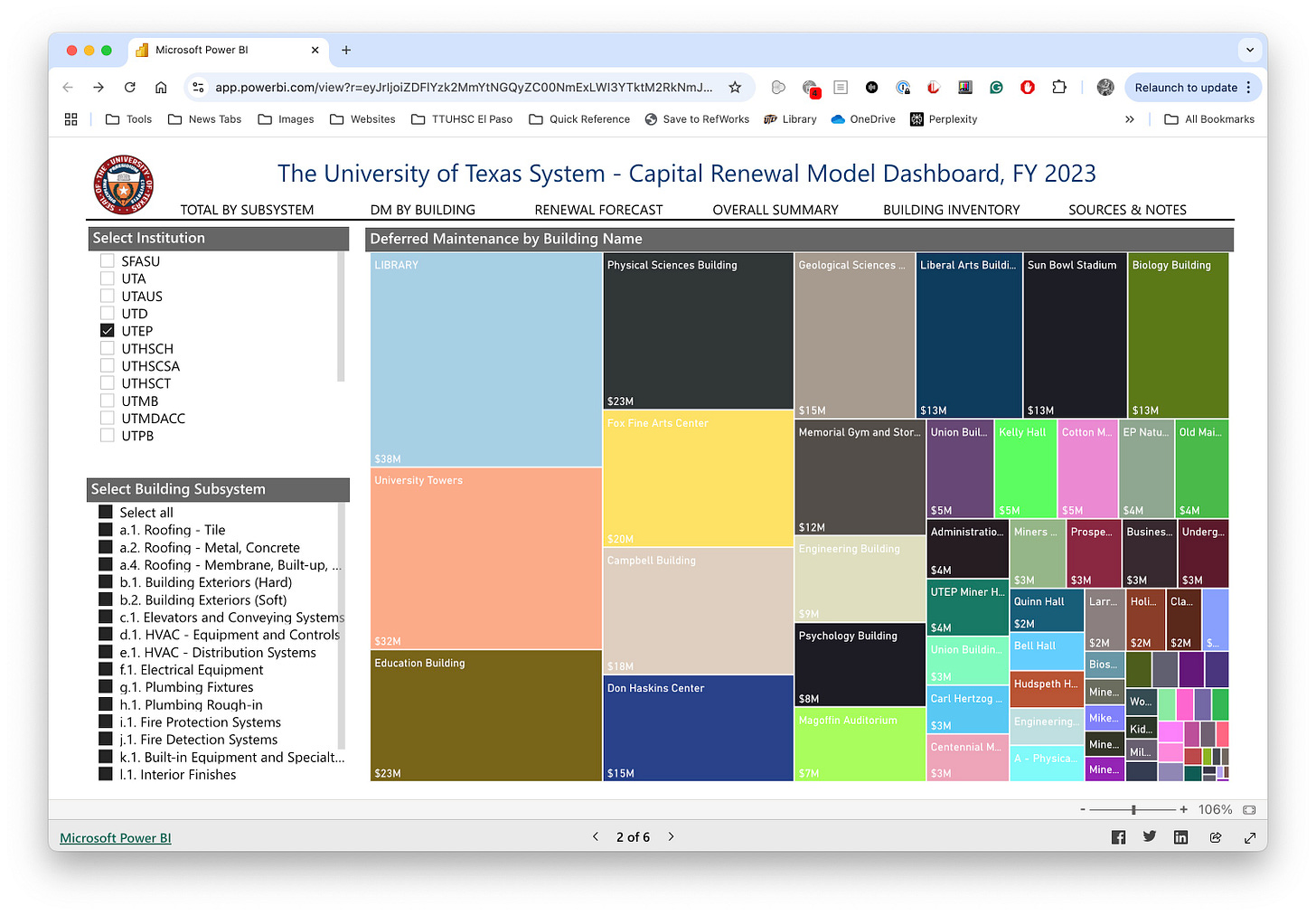
The University Historian found that the deferred maintenance costs for all UTEP campus buildings can be revealed by clicking on each colored square.
Keep in mind that President Heather Wilson claimed the total deferred maintenance for the entire UTEP campus is $348 million. Using the UT System website, can The University Historian discover the total deferred maintenance cost of the nine buildings marked for demolition in the August Campus Master Plan approved by the University of Texas System Board of Regents?
2024 Campus Master Plan Raze/Demo/Remove

The total deferred maintenance costs for the nine heritage sites ($15,818,000) comprise less than five percent of the total $348 million in deferred maintenance costs.
This suggests that the financial burden of maintaining these historic structures is relatively minor compared to the campus's overall maintenance challenges. Consequently, it raises questions about whether deferred maintenance alone is a sufficient or compelling justification for their demolition, implying that other motivations may be at play.
Union West
The first building slated for demolition is Union West.
The deferred maintenance cost for Union West is $3,051,000. This is less than one percent (0.79%) of the $384 million deferred maintenance line item. The dollar figure does not break out the cost of the 1949 Student Union Building, a core heritage site, and the 1959 building extension, which is not.

According to the UT System, $2.6 million (84%) of Union West's deferred maintenance costs are for “interior finishes.”
Is this justification for razing the building?
To better understand this line item, The University Historian reminds you that Union West consists of two separate and distinct buildings.
1949 Student Union Building, designed by Percy McGhee and constructed by Robert E. McKee General Contractors Inc., El Paso.
1959 Student Union Building Extension, designed by Ralph Davis of Davis and Foster Architects and constructed by C.H. Leavell and Co.
Despite only being separated by ten years, these two connected buildings represent two entirely different epochs of architectural design, engineering, and construction methods.
1949 Student Union Building
Percy McGhee united two architectural styles in his 1949 Student Union Building exterior design. The first is the classic Bhutanese Revival style perfected by Henry Trost in 1917. This style guides the silhouette of the building's exterior, featuring sloped battlement walls, and retains the high-inset portrait windows and roof overhang.
McGhee merged the Bhutanese Revival style with a classical design style, replacing the colored roofline bands and mandalas with stone carvings. These carvings tell the story of the school’s mission as reflected in its motto, Scientia et Humanita (science and humanities), by placing a pickax and shovel within a book.
The interior of McGhee’s 1949 Student Union Building is a superb example of post-World War II Art Deco. It is characterized by a blend of geometric forms, streamlined designs, and vibrant ornamentation, reflecting both the optimism of the post-war era and the enduring influence of earlier Art Deco styles. The use of new materials, including rust-proof metals, added a modern flair to interiors that retained their classic elegance and showcased a mix of industrial imagery and luxurious finishes.
1959 Student Union Building Extension
Built in the late 1950s, after Percy McGhee retired, the 1959 extension was designed by Ralph Davis of Davis and Foster Architects and constructed by C.H. Leavell and Co. It deviated significantly from the Bhutanese Revival style and materials of the campus established by Gibson, Trost, and McGhee and built by contractors Ware and McKee over the previous four decades.
The 1959 extension marked a transition toward the streamlined aesthetics of Mid-Century Modern and Brutalism that would dominate UTEP for the next three decades. These include Davis’s 1959 Union extension, the Geological Sciences Building extension, and Fox Fine Arts. There are no roof overhangs or carvings. Even the windows deviate significantly from Bhutanese form, squashed rather than tall.
The interior reflects the exterior in its modernism. The public spaces are sterile, lacking the warmth of the 1949 building. Instead of fireplaces, there are blank walls. Unadorned, functional hallways and rooms starkly contrast with the Art Deco trim of McGhee’s design.
We are destroying a core heritage site attached to an extension with an ugly interior simply because it needs a $2 million refurbishing job.
Seriously?
Deferred Maintenance Cost of all 20 Core Heritage Sites
The University Historian wondered about the total deferred maintenance cost of all twenty core heritage sites. According to the UT System website, all twenty buildings within the 64-acre core campus worthy of preservation combined account for $61,810,000. This figure is less than 18% of the total $348 million deferred maintenance costs across the entire 400-acre campus.
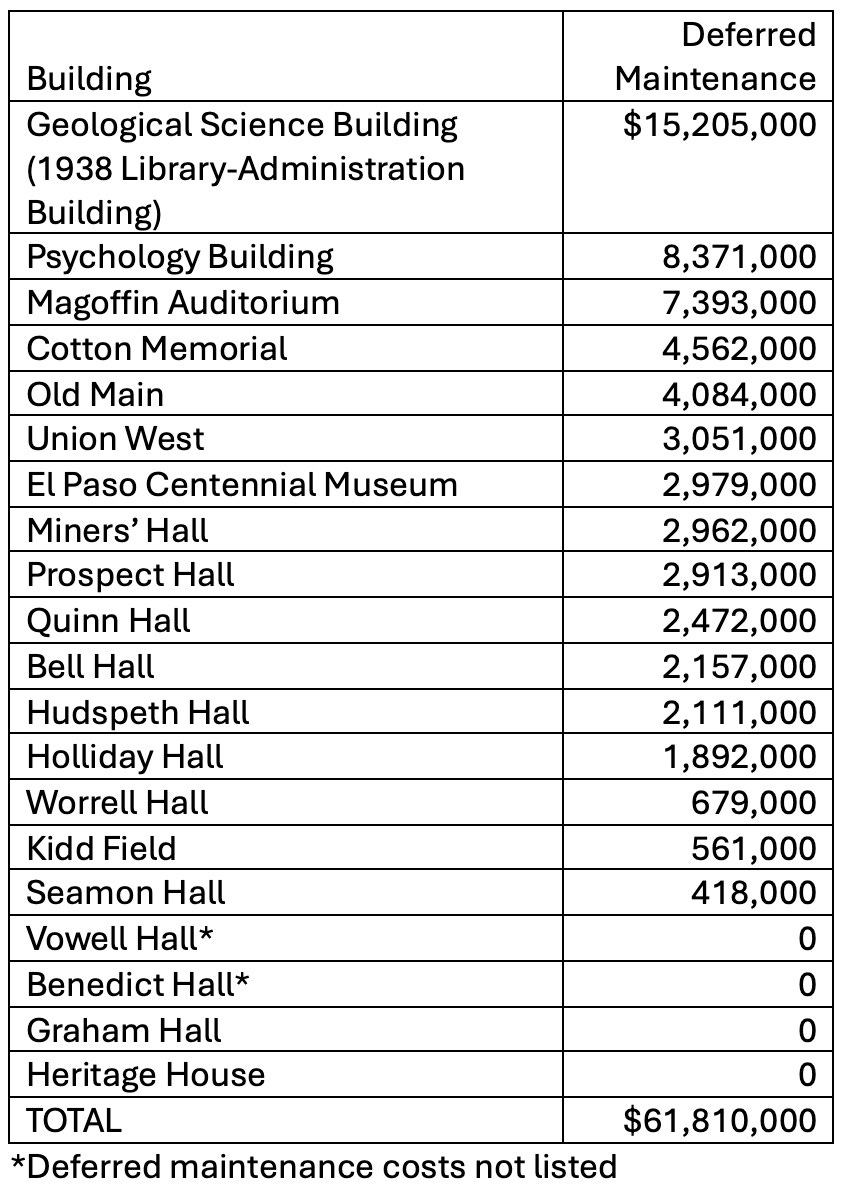
Big ticket items
What makes up the bulk of the deferred maintenance costs?
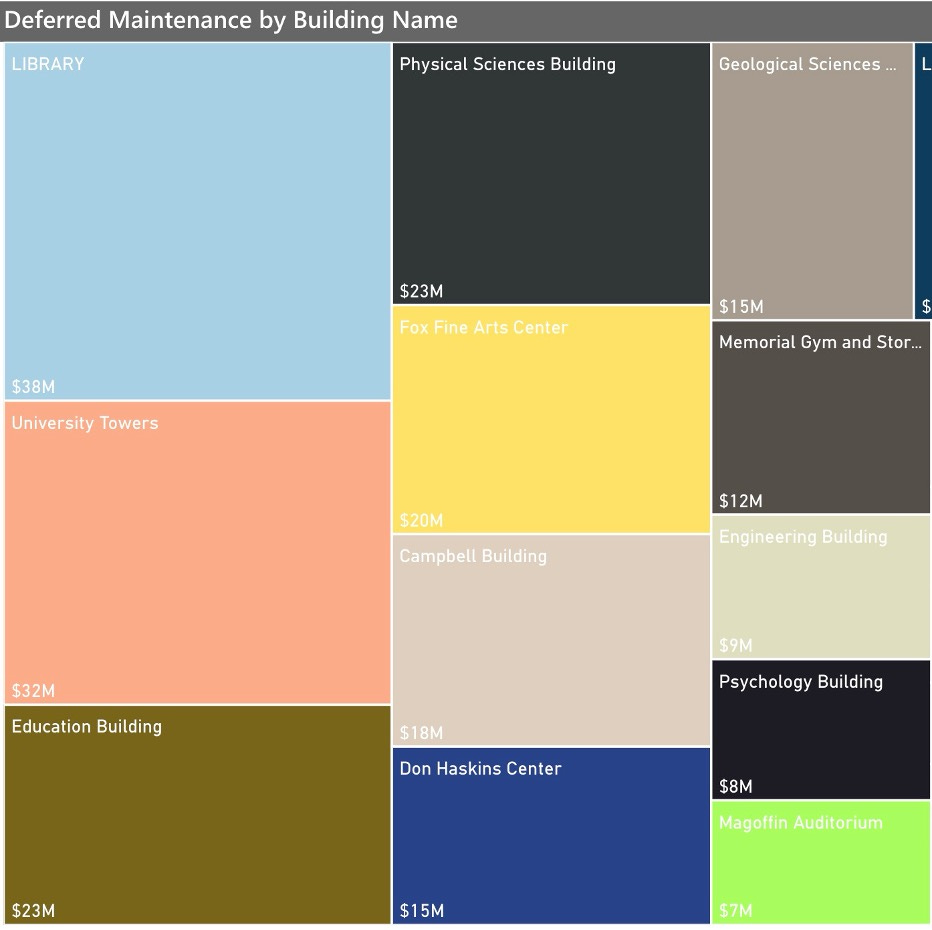
According to the UT System, the combined core heritage sites' deferred maintenance costs are not even among the top twelve big ticket items, which account for $220 million, or 57 percent of the total $348 million in deferred maintenance costs.
The University Historian reminds readers that one key concern with the 2024 Campus Master Plan is not so much its vision as how it decided to propose razing the nine heritage sites. The plan included no criteria other than their supposed deferred maintenance costs.
Using publicly supplied data, as you would expect a top-tier research university to do, we can safely eliminate deferred maintenance costs as the primary reason for demolishing these buildings.
The University Historian remains at a loss to explain UTEP’s true motive for razing these historic landmarks.




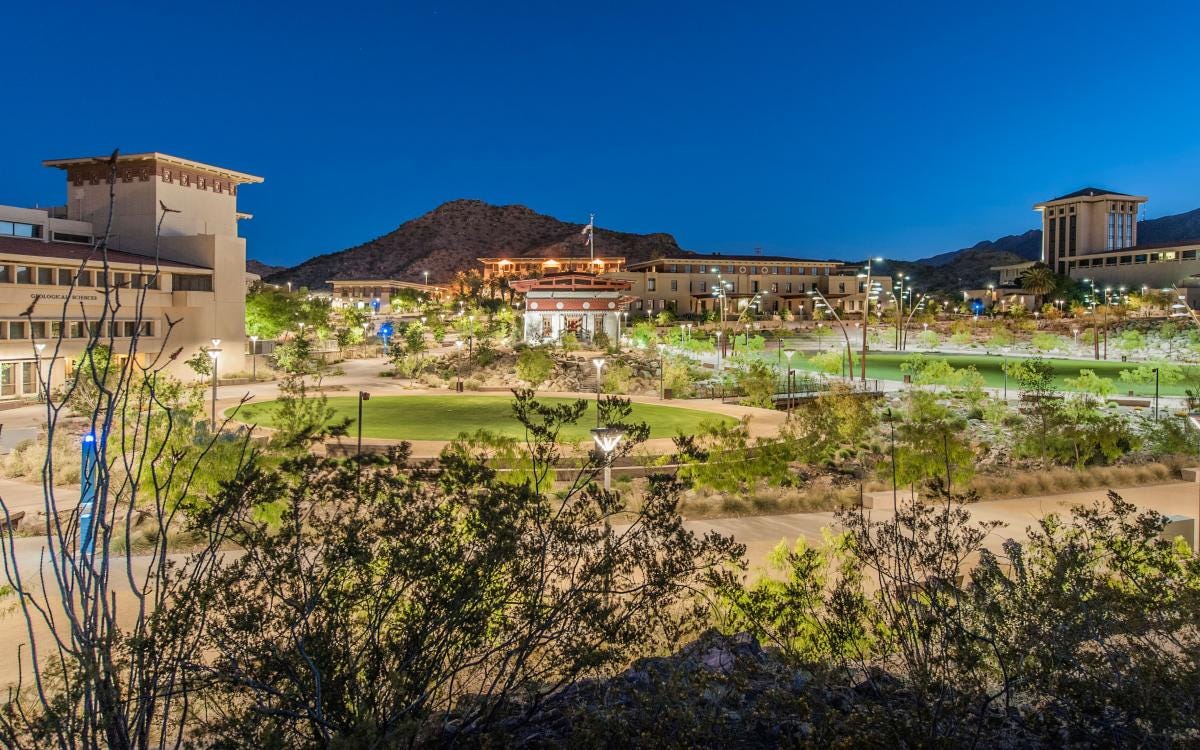
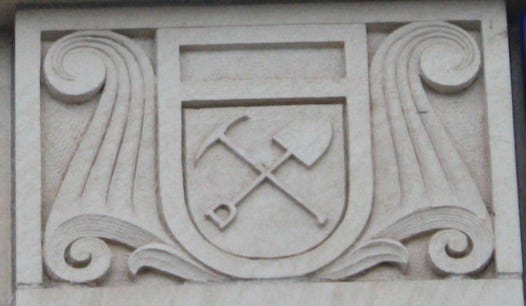
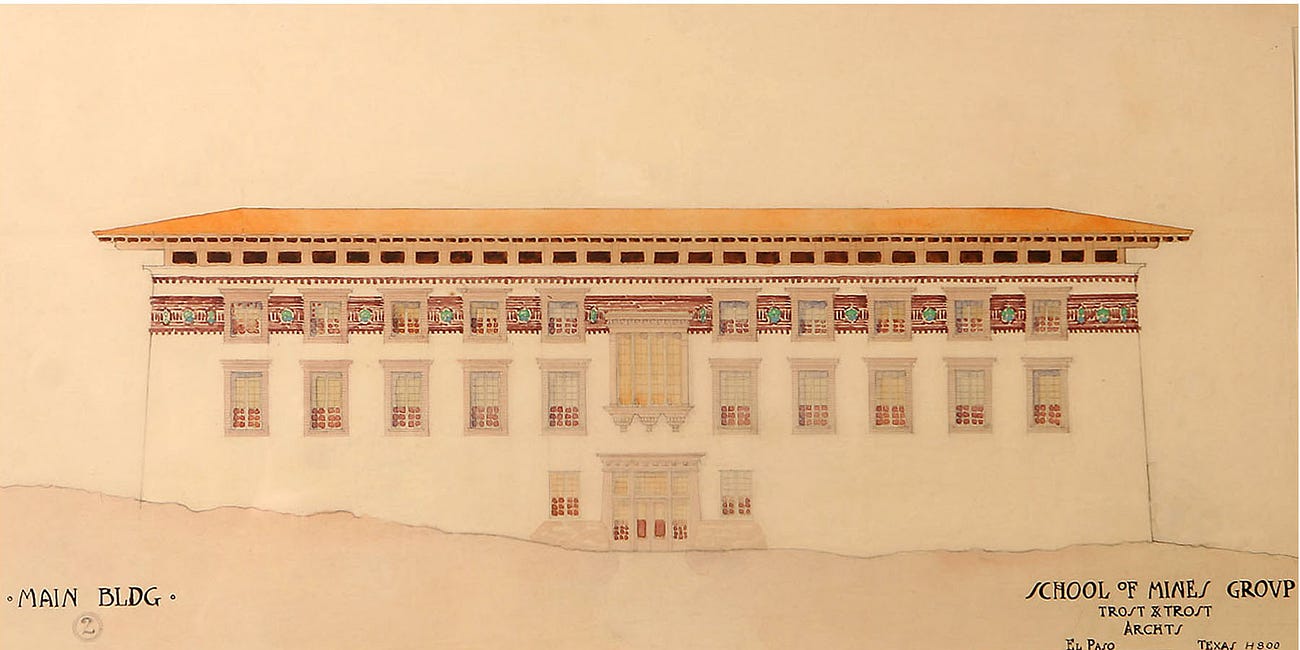
I am interested in having a conversation with Mr. Historican about this plan. Hopefully, this is all a misunderstanding and UTEP is not planning to demolish its history. Please contact me at mhadighi@ttu.edu